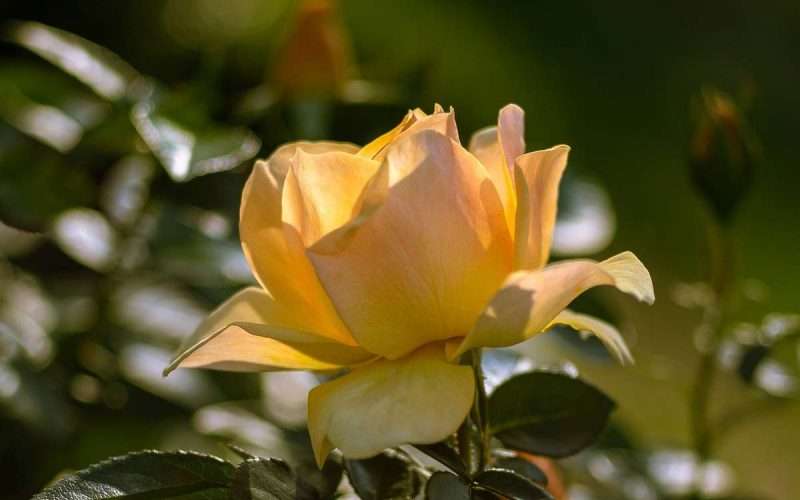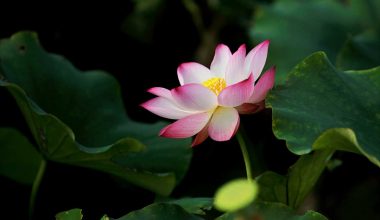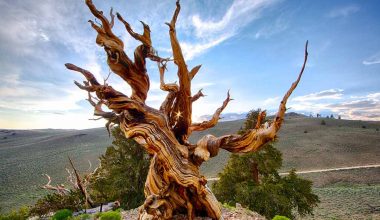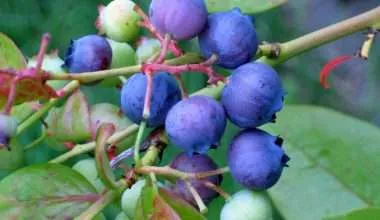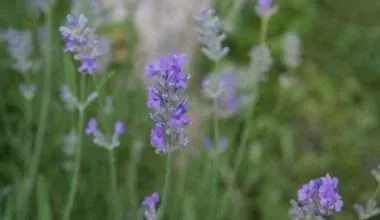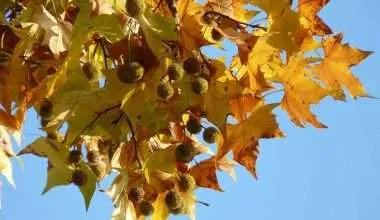Table of Contents Show
The genus Rosa or roses, come in a variety of different shades. Beautiful to look at, at all times, roses have been associated with everything, from love to friendship to purity.
The beautifully shaded, bright flowers and rich, green foliage are popular across cultures and hold an important place in history. With so much going for it, there seems no reason to believe anything could ever go wrong for roses, right? That’s until you look at the yellowing leaves of your rose plant.
Of course, natural causes like weather cooling down in winter can turn those dark green leaves yellow. And there’s a variety of roses called rugosa, which naturally develops a striking yellow color on the leaves. But what if the leaves turn yellow without any of the above reasons? Read on to find out!
Common Causes For Yellowing of Leaves On The Foliage Of Rose
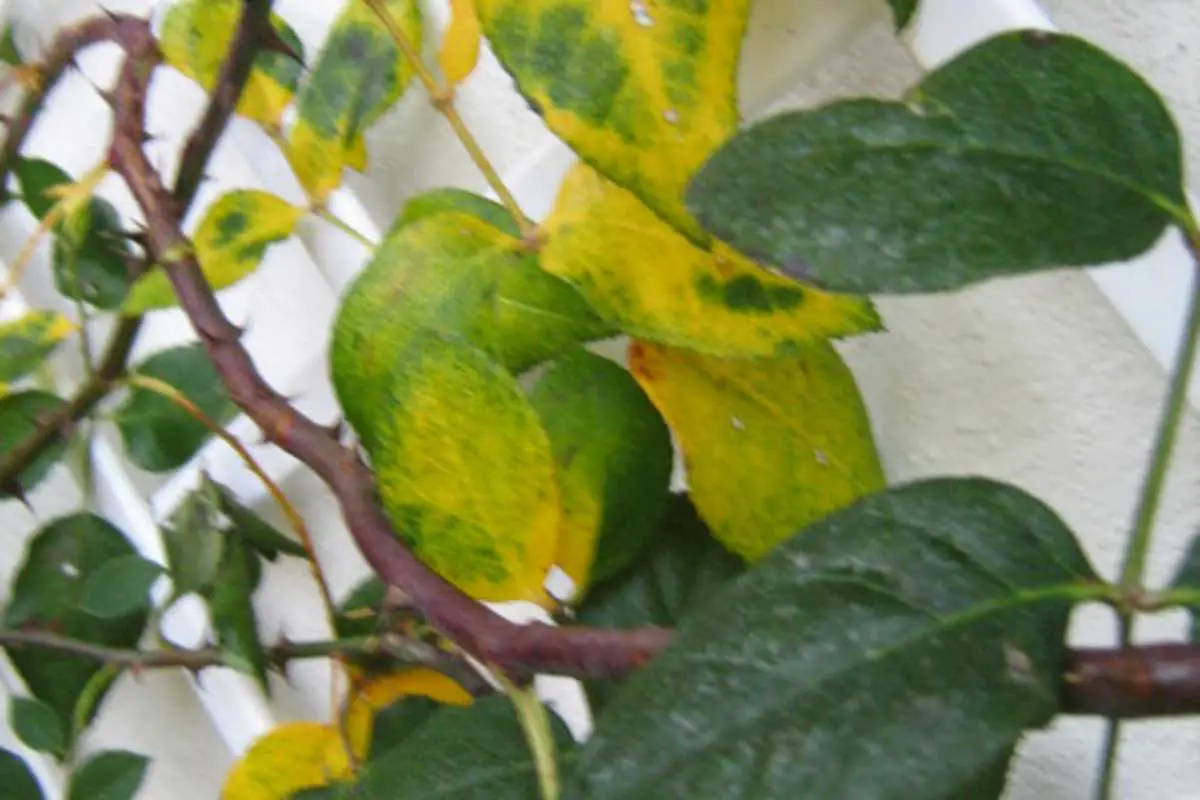
The changing colors of leaves indicate some sort of mineral imbalance in roses. Here are the reasons that cause a rose leaf to turn yellow, and ways to deal with them.
1. Overwatering
A rose bush requires evenly moist soil that is at least 10 inches (25 cm) deep. However, this soil shouldn’t be soggy or waterlogged.
The roots of roses require air to breathe and waterlogged soil can block air passages underground. This will deprive the rose of oxygen and end up with leaves turning yellow.
Lack of oxygen can cause the yellowing of leaves in roses. What’s worse is that staying too long in waterlogged soil can also cause rotting roots.
This can ultimately lead to the death of the plant… the last thing that you’d want to see! Several reasons can trigger waterlogging such as poor drainage, using clay-based soil, or watering too frequently.
Planting the rose in a low-lying spot is a problem as well because the water from the entire garden will accumulate there. For pot roses, the drainage holes should be checked for blockages.
Solution
Watering usually depends on climate but for most varieties, once a week in the growing season should be enough. You can use a moisture stick or your finger to check the moisture of the soil.
Build trenches around your roses to redirect water if they are planted in low-lying spots. For clay-based soils, use organic materials to amend for the lack of drainage. For pots, either repot the rose or create drainage holes in the pot.
2. Not Enough Watering
The soil should not get too dry. Plenty of water will ensure the leaves of roses won’t start turning yellow and fall off.
But what happens when you are giving the plant enough water and the soil continues to look dry? That could happen when you have not chosen the right soil to grow your roses in.
A sandy soil with poor water retention or inefficient watering techniques can cause this problem. Planting your rose directly below the sun can also be a problem.
That’s because this will mean that the water from the soil might be evaporating too quickly.
Solution
To avoid water evaporation from the soil, layering the soil with an inch of mulch is a good solution. Mulch won’t let the sunlight directly reach the soil.
This will also improve the water retention issue so the soil isn’t drying too quickly. Using the right mulch, like compost or wood chips, can also improve the condition of sandy soils with nutritious contents.
Avoid overhead watering systems as the direct sun can affect their efficiency. Instead, try a drip or soaker hose for a steady water supply throughout the day.
Try to plant in a light-colored container or pot or the ground. Dark-colored containers can get heated up too quickly and will cause the soil to dry.
3. Over-fertilization
Synthetic fertilizers contain a high concentration of salts. Over-fertilization can cause this salt to build up causing the yellowing or burnt complexion of leaves. Fertilizers from other parts of the garden may have washed towards the rose patch also, so check out the drainage.
Solution
Plants have specific fertilizer requirements. It’s always better to use less fertilizer and gradually add more according to the plant’s needs.
Note the requirements of the rose bush and add fertilizers accordingly. With roses, it’s better to use slow-releasing natural fertilizers or a well-balanced compost. Removing the affected leaves and rewatering the rose bush should heal it in no time.
4. Unbalanced/Insufficient Soil Nutrients
Lack of nutrients in the soil is another cause of the yellowing of leaves. Yellow leaves with green veins in the leaves indicate chlorosis.
Lesser nitrogen in the soil means the roses won’t be able to absorb as much solar energy. The rose bush could end up suffering from iron or magnesium deficiencies.
Or, alkaline soil can start chlorosis in roses which affects the availability of nutrients from the soil. This last can be caused by iron deficiency in the soil as well.
Solution
Some inexpensive kits can help you figure out the nutrient level and pH of the soil. The lack of nutrients can be dealt with by adding specific materials and fertilizers.
However, it’s better to switch your plant to a pot if soil pH is the issue here. You can try to change the pH of the soil as well by adding some specific materials.
However, it’s risky because it can unnecessarily affect the pH more than is strictly necessary and cause a greater pH imbalance. So, it’s better to create your soil and build a raised bed or large pot for your roses.
5. Overheating
A weather problem such as a particularly severe heat stroke can cause a yellowing of the leaves. If there’s an unnecessary pool of water below your rose, the sunlight can be reflected toward the leaves.
This will be particularly harmful to the lower-hanging leaves, heating them in the process. Very dark mulch can also retain heat providing unnecessarily high temperatures to the plant. This extra heating causes the leaves to turn brown and drop.
Solution
In preparing for those hottest of days, use a light-colored mulch that doesn’t retain heat. After watering, make sure the water isn’t pooling around the plant and is being absorbed by the soil.
It’s also a good idea to install a shade for the plants to provide them with a slightly cooler environment.
6. Insufficient Sunlight
Roses need at least six hours of sunlight to grow into healthy bushes laden with flowers. So if the top layer of leaves becomes too bushy, they can create unnecessary shade for the remaining leaves.
This amount of shade will result in the leaves at the lower level turning yellow. So too little sun, just as much as too much sun, can adversely affect rose leaves and their coloration. Over a long period, this condition will also lead to leaves breaking off and falling.
Solution
It’s better to re-pot roses in another container if you have seen that the particular spot isn’t receiving enough sunlight. Prune the leaves above to allow sunlight to pass through to the lower leaves.
Also, it’s better to prune surrounding plants as well to create a proper passage for the sunlight.
7. Pests And Diseases
Finally, black spot disease can also cause the leaves to turn yellow, or black and brown. It’s an easily treatable disease, common amongst rose bushes. The catch is to diagnose it early on.
If you see some yellow leaves and little webs around the stems, then it’s spider mites that have infected your rose bush. Rose leaf hoppers can cause a similar type of discoloration but it’s more aesthetic than what’s caused by spider mites.
Solution
A homemade fungicide can come in handy. Mix four teaspoons of baking soda in one gallon of water and apply it lightly on affected leaves to prevent spread. You should prune these affected leaves with a sterilized tool and burn them also.
Infected leaves can spread the fungus if mixed with compost. As an added precaution, ensure the rose has good airflow and no moisture is building up on the leaves either.
Homemade fungicides can help keep pests away also. However, for best results and a quick, definitive solution for your infected rose leaves, here’s what to do.
You can apply a natural insecticide, neem oil is one good example, in small amounts to the affected leaves. You can also rub the oil on any other spots where you see a build-up of the pests.
This, along with your other homemade remedies should do wonders for your rose bush!
